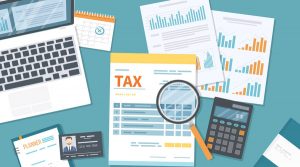Do you want to have easy access to business capital whenever and wherever you need it? If so, you’ll be pleased to know that you can obtain credit line for business-a finance tool that offers the same flexibility as that of a credit card, at a more affordable price.
What is A Line of Credit?
A Business Line of Credit is one of the most common financings offered by banks and lenders to provide capital to entrepreneurs for their business expenses. Just like credit cards, the borrower can access up to a certain amount anytime. Unlike ordinary loans, there is no need to wait for the lender’s approval before they can withdraw the needed amount, they can use it for any purpose and spend it in any way they want. The borrower can also repay the credit and reuse it up to its credit limit. The credit line is also called a revolving credit agreement, an open-end credit and a bank line.
Example of a credit line for your business
Good Steward Enterprise obtained a credit line of up to $5000. On January 2018, the company used $2000. It means it will only pay interest for $2000 debt; the other $3000 will not be included in the calculation of debt. If it repays $2000 plus interest and charges, it can access up to $5000 credit limit again.
In the given example, the financial institution enters into an agreement with the Good Steward Enterprise to lend cash up to a specified limit, which is $5000. The lender charges an interest expense based on the amount drawn from the portion of the credit line. The credit limit was determined before the borrower can access the funds. This financing option is suitable for enterprises with short-term cash needs.
Credit line cost
Unlike traditional loans, the lender only charges interest on the amount actually withdrawn, in proportion to its credit limit. You may also incur additional fees such as commitment fees, legal and document fees. Some banks also charge unused fees for the unused portion of your credit limit.

Credit line vs credit card
Here are some of the practical advantages of a credit line for business over a credit card:
1. Limited spending
While you can say that “sky is the limit” when it comes to credit cards, such is not the case with a line of credit. While it offers the same convenience as that of a credit card, it does not condone limitless spending. You don’t have to worry about exceeding over your budget because you will not be able to withdraw beyond the pre-0detemined credit limit.
2. Helps develop good spending habits
Knowing that you have to work on a certain budget can help you make wise spending choices. For this reason, a credit line is a practical choice for people with bad spending habits. While you run your business, you don’t just enjoy the access to quick cash anytime, you need it, you will also be reminded about the maximum amount of money you are allowed to use—so you have to spend it wisely.
3. Minimizes interest and fees
Interest charges accumulate over time until you fully you’re your bills. In case of default, you will only pay for the interest on the sum of money you actually used. It will not only limit the amount of debt but the fees associated with the amount you borrowed as well.
What are the benefits of a credit line?
You can borrow up to the maximum amount of credit, and you only need to pay interests on the amount you actually borrowed. Paying for the excess can be such a displeasing fact. But a credit line doesn’t promote such. You only get to pay for how much and what you actually borrowed plus a little bit of interest. If you tend to spend only a little, then a credit line is perfect for you, seeing as you wouldn’t have to pay so much. And if you want to save a little bit and only have a little extra to pay, then a credit line would do you good.
Turned down by banks?
Line of credit helps business owners who are turned down by traditional banks to obtain financing despite the lack of financial documents to prove income. The strict lending guidelines by the banks limit the business owners’ access to working capital. It impedes business growth-especially if the borrower does not have the required financials like income tax return and books that reflect stable cash flow for the past two to three years.
Avoid the debt lock
While there are many financing companies offering line of credit, not everyone can qualify especially if the debt to income ratio is very high.
For example, if your debt exceeds 50% of your income, the lenders may think that you cannot repay the loans and may charge hefty interests in the process or they may just completely reject your application because of the risks associated with lending to individuals and companies that may not be able to repay the loans.









